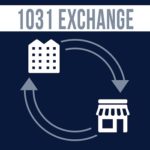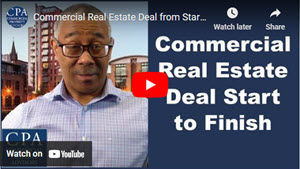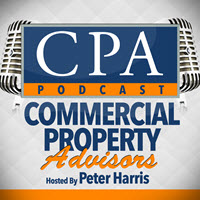
Selling your single-family home rental and trading into a large commercial property without paying capital gains taxes is among the greatest wealth building tools that exist today. Allow me to explain. I took my single-family rental and a little cashflow, and I sold it. I took 100 percent of my profits and I bought a 44-unit apartment building without paying taxes. Not only did I increase my net worth using a 1031 Exchange, it also increased my cash flow enough so I was able to leave my job as an engineer.
Let’s say that you have multiple single-family homes. You purchased them with the purpose of using them to help you with your own retirement, but it didn’t quite work out the way you planned due to low cash flow, the amount of repairs, and perhaps management issues. What should you do? How can you get on course towards retirement?
What is a 1031 Exchange?
How about bundling your several single-family properties and selling them without paying taxes again, trade up into possibly a Starbucks, into a Triple Net Lease investment, in which you have zero landlord responsibilities and maybe you have a 15-year lease. This increases your net worth and also stabilizes your cash flow for another 15 years. How can you do that? Well, that is what we call the 1031 Tax-Deferred Exchange. In this post I will illustrate how to take your rental property and trade up into a bigger commercial property, increasing your net worth and cash flow without paying taxes.
I can not stress enough that if done the correct way, the 1031 Exchange is among the most effective tools to build wealth in real estate by deferring taxes. I will begin this case study by giving you the problem and then the solution, then moving on from there so that you really can get it.
The Problem
The problem is that you have a single-family home with equity. That’s a good problem. You also have a bit of cash flow, which is pretty good. Here is the issue, when you started buying single-family homes your goal was to purchase multiple rentals so that you can increase your cash flow. Your expectation was that this would prepare you to retire, leave your job, pay college tuition when the time comes, or if perhaps you were to get downsized at work, you could still pay the bills. For many of you, that is your goal.
However, your plan isn’t working out how you anticipated. The main reason it isn’t is because it is taking too long. Purchasing single-family homes is the long way of reaching the goals.
The Solution
The solution is based on the 1031 Exchange. The solution is to sell all your single-family home rentals, or those with the equity, and performing a 1031 Exchange or 1031 Tax-Deferred Exchange, where you pay no taxes and buy either a triple net lease investment, a large apartment building, industrial building, mobile home park, a shopping center, self-storage, office building, or warehouse.
If you do it properly, you can multiply your cash flow and net worth. The next thing that I want share with you is the three main things that you need to know when considering a 1031 Exchange.
3 Things to Consider Before You Do a 1031 Exchange:
You need to understand the 1031 Exchange basics. The numbers 1031, is code word for an Internal Revenue Service (IRS), tax code. 1031 Exchange is a regulation and stipulates that you can sell your investment property and exchange up into a bigger property and defer your capital gains taxes if you follow specific rules. I call those rules the 1031 Exchange basics.
Know exactly what your profits are. It doesn’t make sense to find this out when you sell your property. You need to be aware of what the profits are so that you know what it’s possible to trade up into.
What’s your replacement property? What are you exchanging into? Are you selling your single-family home rental and trading up into an office building, self-storage, apartment building, retail or raw land? We’ll discuss what you can trade into, and what you cannot.
4 Basic Rules of 1031 Exchanges
1. Your property that you exchange must be equal to or greater than the property that you are selling. The property you’re exchanging into is your replacement property, and the property you’re selling is called your relinquished property. If you’re selling for $500, 000 and buying at $1 000,000, your replacement property is greater than your relinquished property.
2. The amount of equity that you move forward must be equivalent to or greater than the property or properties you purchase. You must take all your profits from your relinquished property and put them in your replacement property. If you make $250,000 on your sale and you merely move forward $200,000, then your 1031 Exchange has failed, and you must pay capital gains on that $50,000. It defeats the purpose of everything you are trying to do, which is to purchase more assets and build wealth. You must bring your total profits of $250,000 into the new deal. Then you have your corresponding mortgage which is the leverage component. Again, the value and the equity have to be equal to or greater than the property that you relinquish.
3. As soon as you sell your property, you have 45 days to identify your new property and have a total of 180 days to close your deal; meaning after 45 days you have an additional 135 days to close your deal. You have six months to do everything. If you go past those six months, then it is regarded as a failed 1031 Exchange, and you must pay the taxes.
4. Not just anyone can complete your 1031 Exchange, they need to be a qualified 1031 Exchange Company. It is called a Qualified Intermediary or QI. You can find one on the web or ask your escrow firm for who they use, or who they approve to perform your deal.
3 Rules of the Identification Period
- The first rule when identifying your next property is known as the three-property rule. You can identify up to three properties, and then close on one of them, as long as the value is greater than or equal to your property that you sold. That is the three-property rule.
- Next, is the 200% rule where it’s possible to identify an unlimited number of properties but it can’t exceed 200% of the value of the property which you relinquished.
- The 95% rule is when you can identify more than three properties, but you must buy at least 95% of the properties that you identified.
The most popular of the three is the three-property rule since it is the simplest. Meaning that as soon as you sell your property you can identify three properties and just purchase one, provided it is greater than or equal to the value of your relinquished property and you transfer all of your profits forward.
Which Properties Qualify?
Another thing to emphasize is the properties you cannot use for a 1031 Exchange:
- Your own personal residence doesn’t qualify
- You can’t trade into stocks
- Into developed lots
- Into foreign property
Let’s dive a bit deeper into the case study so that you can see how it actually works, and if you have a property or properties that you’re thinking about selling to trade up, you can simply follow this guideline. The first guideline was to know the 1031 Exchange basics. Now that you fully understand those basic rules let’s proceed to the second and third main things you need to know to successfully carry out a 1031 Exchange.
Determine Your Profit
The second guideline is to determine the profit that you are going to have to move forward into your exchange. Here’s an example of how you are going to calculate exactly what your profit is:
Let’s say you are selling your property for $500,000. You’re going to pay off any loans you have, pay the commission, and cover closing costs. Whatever is left over is your equity that you’re moving forward. This is your down payment. Remember, to be successful in a tax-deferred exchange, all of it needs to move forward into your replacement property.
Your down payment will then help you to determine what your replacement property will be. For instance, let’s say that once you sell your property and pay your loan and closing costs, you have$250,000 remaining. You are going to place that into your 1031 Exchange account and then it’s possible to purchase a property of up to a million dollars, if you want to leverage that much. That’s a 25% down payment.
3 Factors in Selecting A Replacement Property
What Are Your Goals?
When selecting your replacement property, the first question that comes to mind is; what exactly are your goals? Are you going to sell your single-family home rental and exchange up into an apartment building to increase your cash flow? Or are you going to purchase an office building, self-storage, or retail?
It’s important to think about your goals and there are two goals I can think of immediately. The first is to increase your cash flow. The second is to restart depreciation. Perhaps you’ve had your rental property for several years, and you can no longer depreciate it, and now you need to do a 1031 Exchange, buy a larger building, and restart the depreciation.
What Can You Afford?
Just because you have $250,000 and would like to leverage it into a million dollar property doesn’t mean you are able to afford it. You need determine whether you will qualify for the loan and if you can do that financially.
Get Started Early
The last thing to consider, and possibly the most important nowadays, is to get started early. Back when I started doing 1031 Exchanges, there were an abundance of properties to choose from all over the country. This is no longer true. Now it requires time and execution, so contact me, get some advisors on your team so that you can be more successful in this endeavor.
1031 Exchange Case Study
I kept the case study simple because if you plan well, it can be. I’m going to sell my single-family home rental. My goal here is to increase my cash flow and get my retirement on track again. Purchasing a single-family home was a great idea at first, but the cash flow of about $300 per month is simply not enough. I’m going to sell my single-family home for $500,000. Once I pay my loan off, pay the realtor and cover the commissions and closing costs, I have about $250,000 in profits. That goes in my 1031 Exchange account. Remember, to make this legal, it needs to be a 1031 Exchange Qualified Intermediary that hold the money for you. I then have 45 days to identify my next property. I’m looking at an apartment building, a Dollar General store, and an office building nearby. I decide to go with the 16 unit apartment building called Village Creek Apartments, and I’m going to purchase it for $750,000. Remember, the rule that when you sell your property, your replacement property must be equal to or greater than your relinquished property. With this example I go from $500,000 to $750,000.
Why Purchase This Property?
The goal is to increase the cashflow, so let’s go over the numbers so you can see why I selected this particular property.
- It brings in $112,000 annually in gross rental income.
- I cover all my expenses, insurance, taxes, maintenance, and property management, which is $43,000.
- I am left over with $69,000, which is my NOI. Income minus expenses equals NOI. This $69,000 is what I have left to pay the mortgage.
Here’s a quick calculation on the mortgage:
- The purchase price is $750,000
- My down payment is $250,000
- I will have a $500,000 mortgage.
A quick calculation at 5% interest, amortize over 25 years and the payments are approximately $2,900 per month. Multiply that by 12, and it comes out to be $35,076 each year.
My NOI, minus my mortgage for the year, equals my cash flow for the year of $33,924. That is why I’m purchasing this investment property. I’m moving from $300 per month to $33,924 per year, which is a substantial jump. That’s what you can do, and the best part is, it’s tax-free.
To recap, I identified this property, I decided on it, and I’m going to purchase it. Then I have an additional 135 days to close. Again, this is important. I have 45 days identify, let’s say I do it on the 45th day, I then have an additional 135 days to close, for a total of 180 days. If I go over that 180 days, I’ve failed my 1031 Exchange, and I must pay the taxes.
Mission Accomplished
Did I accomplish my goals? To start with, my exchange was successful, and I didn’t pay taxes on the $250,000, therefore my taxes were deferred successfully. Second, I increased my cash flow by nine times. I am going from $300 per month to $2,900 per month. Thirdly, my depreciation restarts. I had my single-family home for quite a while and utilized all the depreciation and tax write-offs. Now I’m purchasing this 16-unit apartment building, and I can begin once more writing off all the profits that I make. Finally, the most crucial thing for me personally, I am back on my path to retirement by exchanging into this 1031 Exchange property.
I have a YouTube video called “How to Turn Two Houses Into 34 Apartment Units”. You can watch it and see a good example of what one of my students did. He took his two single-family homes and purchased 34 apartment units as a 1031 exchange. I go over how he did it and all the numbers. It will probably be quite helpful for you to watch this video as well.



